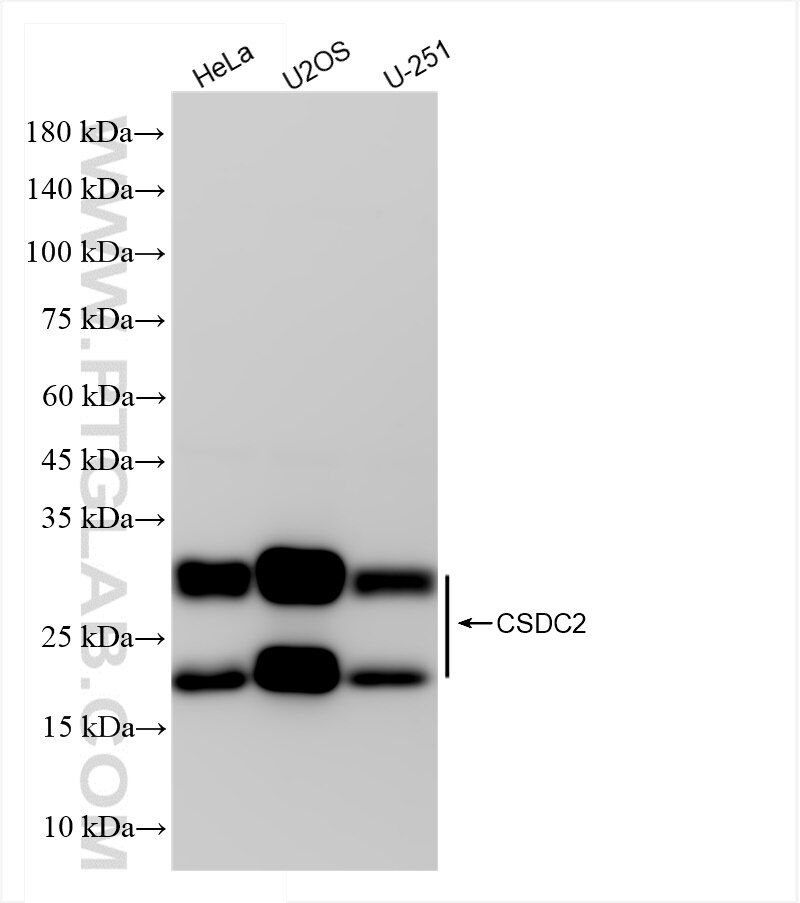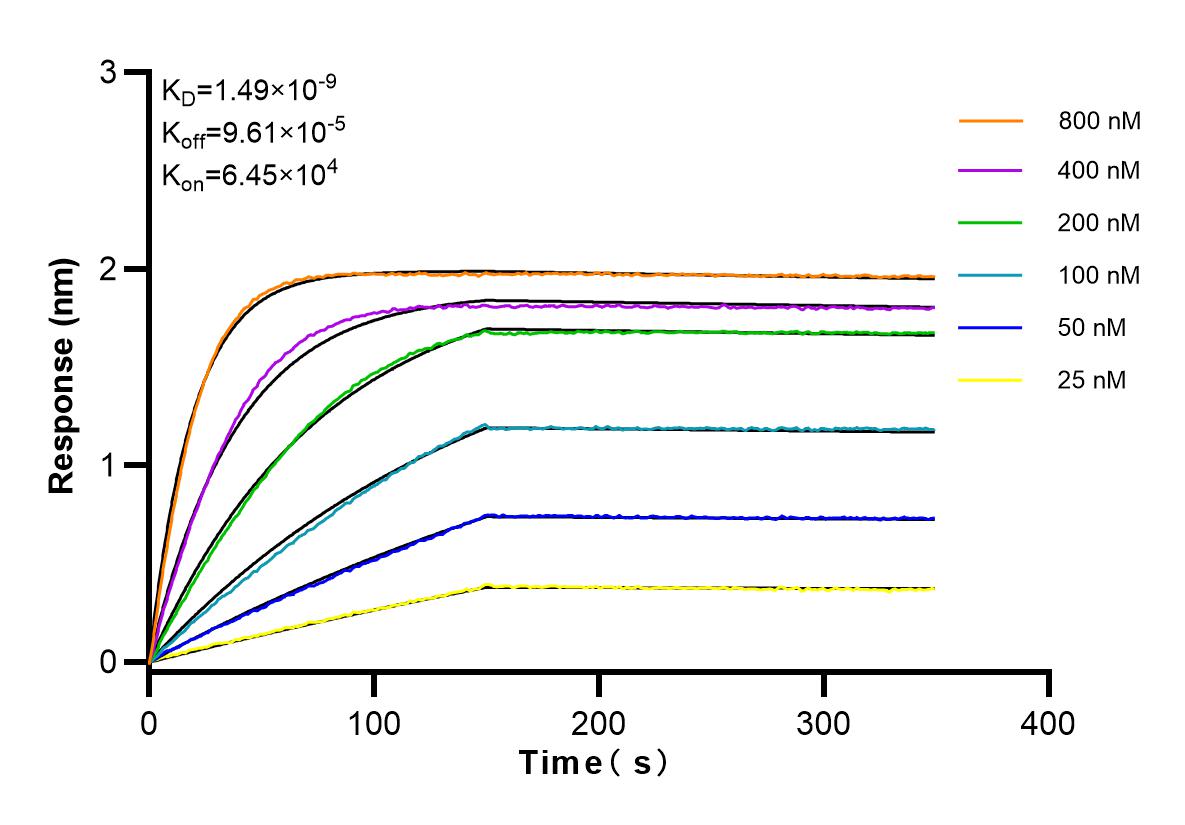Tested Applications
| Positive WB detected in | HeLa cells, U2OS cells, U-251 cells |
Recommended dilution
| Application | Dilution |
|---|---|
| Western Blot (WB) | WB : 1:2000-1:10000 |
| It is recommended that this reagent should be titrated in each testing system to obtain optimal results. | |
| Sample-dependent, Check data in validation data gallery. | |
Product Information
83886-5-RR targets CSDC2 in WB, ELISA applications and shows reactivity with human samples.
| Tested Reactivity | human |
| Host / Isotype | Rabbit / IgG |
| Class | Recombinant |
| Type | Antibody |
| Immunogen | CSDC2 fusion protein Ag16216 Predict reactive species |
| Full Name | cold shock domain containing C2, RNA binding |
| Calculated Molecular Weight | 153 aa, 17 kDa |
| Observed Molecular Weight | 20 kDa, 30 kDa |
| GenBank Accession Number | BC067113 |
| Gene Symbol | CSDC2 |
| Gene ID (NCBI) | 27254 |
| RRID | AB_3671468 |
| Conjugate | Unconjugated |
| Form | Liquid |
| Purification Method | Protein A purfication |
| UNIPROT ID | Q9Y534 |
| Storage Buffer | PBS with 0.02% sodium azide and 50% glycerol , pH 7.3 |
| Storage Conditions | Store at -20°C. Stable for one year after shipment. Aliquoting is unnecessary for -20oC storage. 20ul sizes contain 0.1% BSA. |
Background Information
PIPPIN, also known as CSDC2 (Cold shock domain-containing protein C2) is an RNA‐binding protein (RBP), highly enriched in the rat brain, specifically enriched in some pyramidal neurons of the cerebral cortex and in the Purkinje cells of the cerebellum (PMID: 10446180). PIPPIN has the potential to undergo different posttranslational modifications and might be a good candidate to regulate the synthesis of specific proteins in response to extracellular stimuli. Nuclear CSDC2 is connected to proliferation and cytoplasmic CSDC2 to terminal differentiation in the decidua and that CSDC2 could regulate differentiation during decidua development (PMID: 30078185, PMID: 17053029).
Protocols
| Product Specific Protocols | |
|---|---|
| WB protocol for CSDC2 antibody 83886-5-RR | Download protocol |
| Standard Protocols | |
|---|---|
| Click here to view our Standard Protocols |





